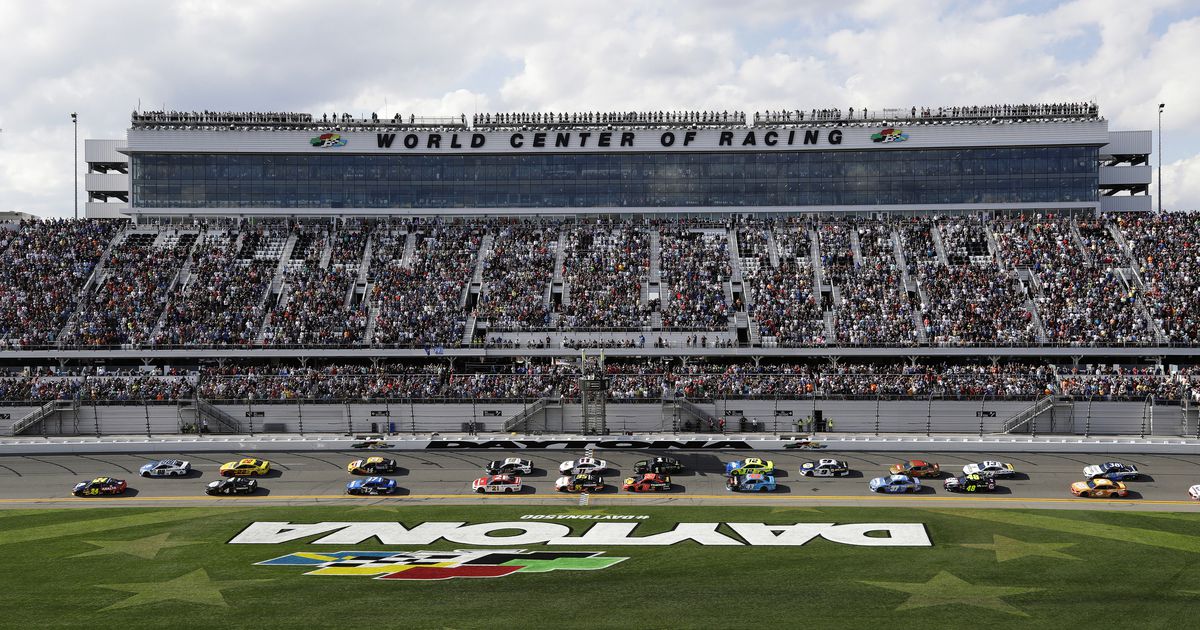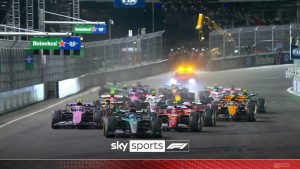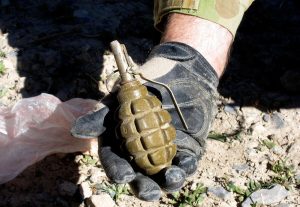Analysis: NASCAR did best it could with 2020 schedule


CHARLOTTE, N.C. (AP) — An entire generation of NASCAR has spent its life tuned to a schedule so predictable events could be planned years in advance and race dates marked milestones.
Daytona meant the beach — a week out of school in February, the Fourth of July for vacation — while Memorial Day was spent at Charlotte. Labor Day meant South Carolina sweet tea at Darlington Raceway.
Seriously, nearly every weekend has been the same for as long as an entire generation remembers.
But 2020 will be different, the first radically changed schedule in practically forever, as NASCAR did the best it could in answering an urgent need to freshen its product.
NASCAR was not blessed with a blank sheet of paper for this Jim France-driven project because binding contracts with its existing track operators limited NASCAR’s power. NASCAR legally could only force a track to move two weeks forward or backward from its existing date; anything more drastic needed track approval.
That handcuffed NASCAR’s effort in demanding the fixes fans have demanded, but the series still made a huge right turn for 2020.
“A lot of that is a product of Jim France, wanting to make some bold moves, wanting to make moves quickly, trying to answer some of the questions or some of the asks of the fans. We feel like we were able to do that,” said Steve O’Donnell, NASCAR executive vice president and chief racing development officer.
BIGGEST WINNER
Martinsville Speedway in Virginia gets the overall win because it got Saturday night before Mother’s Day under its state-of-the-art LED Lighting system AND the final race before the championship round. Drivers can and will use fenders to win at Martinsville, and the schedule changes gave the shortest track on the NASCAR schedule two can’t-miss events.
BOLDEST MOVER
Pocono Raceway agreed to try a doubleheader and run a pair of 400-mile races on one weekend. The move helped NASCAR shorten the season by one week, ending on Nov. 8 on Veteran’s Day weekend— the date NBC Sports requested for the finale.
The Pennsylvania track took on an opportunity to build something from scratch as the first venue to host a doubleheader. Pocono, if inclined, can turn its event into a pretty neat outdoor festival by bringing in musical acts and making the infield the place for the New York City market on one June weekend. How the two events in two days will be pulled off is still in planning stages, and Pocono has already signed on for a heavy and new undertaking. But, why not make it a weeklong event and give IndyCar a share of the stage? Have IndyCar come in a few days ahead of time, as an appetizer to this new doubleheader and run on Thursday night, thus encouraging fans to show up early and stay awhile.
BIGGEST SURPRISE
Do not accuse NASCAR of being too tied to tradition to make a strong move because Dale Earnhardt Jr. can’t remember the last July 4th weekend he didn’t spend in Daytona. You went to the beach when you weren’t at the speedway and that’s just how it always has been because Daytona International Speedway has hosted a race on July 4th or the Fourth of July weekend since it opened in 1959.
The speedway gave up that date equity to take the last race of the regular season, the one that finalizes the playoff field, in late August. O’Donnell said the industry, drivers included, supported ending the season at Daytona even though the track has insane racing and wrecks dozens of cars. The holiday race instead went to Indianapolis Motor Speedway, host of the Memorial Day event of the year 42 days earlier with the Indianapolis 500.
The loudest gripe so far has been concern about temperatures at Indianapolis next July 5th, but IMS for 13 years raced NASCAR during the first weekend in August and then raced 11 seasons in late July. It was only last season, just one time, the race was run in September as the regular-season finale. It is always hot in Indianapolis in the summer, but the speedway for more than 100 years has proven to be an iconic symbol in honoring the nation during patriotic events.
And don’t forget, it was always hot at Daytona in July, too. And at least a portion of Daytona on-track activity was rained out, seemingly every single day.
YOU HAD TO SEE THIS COMING
The season finale went to ISM Raceway outside of Phoenix, a move that validates International Speedway Corp.’s decision to spend more than $175 million to renovate it into a state-of-the-art facility. ISC is controlled by the France family, which owns NASCAR, which is chaired by Jim France. ISC is currently trying to re-acquire the public shares of the company, which would essentially give the France family two-thirds control of NASCAR.
Of course, ISC was going to give its new jewel in the desert a shining spot on the calendar. For ISC, it is a chance to prove it can host world-class events in a market crowded with many of the sport’s crowning moments.
ISC and the France’s have the most to lose right now, and they get to decide what best suits their business model. ISC gets credit for getting Martinsville its race under the lights, the bold departure from Daytona, the Phoenix finale, and getting Darlington Raceway into the playoffs as the opener. But ISC did not step forward and claim a midweek race — no track did, so anyone upset over that void should place blame across the sport — and it was independently owned Pocono that took on the doubleheader. Those accusing NASCAR of not going far enough in changing the 2020 schedule can wonder if ISC — the France family — offered enough.
WHAT ABOUT SMI?
Speedway Motorsports Inc. maintained its place at the bargaining table by earning weather-friendlier dates for Atlanta and second Las Vegas, a new slot for Texas Motor Speedway that avoids the opening of hunting season, and a popular new spot for Bristol in the playoffs. Both Bristol and “The Roval” at Charlotte, critical events in SMI’s eight-track conglomerate, got elimination races in the playoffs and the addition of Bristol puts three short tracks in the 10-race playoffs.
Charlotte also kept the All-Star Race, an event that hasn’t felt necessary in at least a decade. But SMI head Marcus Smith is willing to consider Nashville next year, and fans have loudly asked for the return of that old Tennessee short track.
SMI did OK for itself, but for the second-largest player in the game, it must wonder why the regular season and the playoffs both open and close at ISC tracks.
BIGGEST LOSER
It is easily Homestead-Miami Speedway, host of the finale since 2002. Homestead was built from the 1992 ruins of Hurricane Andrew, got a Cup date in 1999 was a marquee venue four years later.
The track layout is unique, the racing considered among the most competitive of the year, and the NASCAR champion has been the race winner every year since the elimination format began in 2014. The racing at Homestead is very good, and it became ISC’s sacrificial lamb as it was rescheduled to a random Sunday in March.
Homestead never caught on with the South Beach set and the appeal of hosting the championship there was essentially the racing. NASCAR should have made it the second race of the season, and kept the Daytona 500 winner in Florida for a whirlwind trip through NASCAR’s birthplace to open the 2020 season.
BOTTOM LINE
NASCAR did the best with what it could, and there are more positive changes than negative ones in this first big overhaul in forever. NASCAR itself gets a victory for its commitment to legitimate change, and critical television partners Fox Sports and NBC Sports worked alongside ISC and SMI to give fans the best options for 2020.
More important, all sides proved willing to take chances, which should help NASCAR start 2021 planning with a cleaner sheet of paper.






